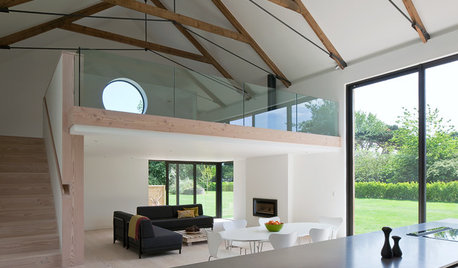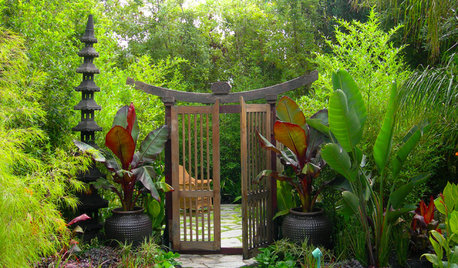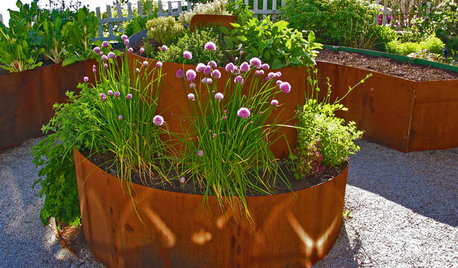Advice for a Tomato Container Garden
trailwest
12 years ago
Related Stories

EDIBLE GARDENSSummer Crops: How to Grow Tomatoes
Plant tomato seedlings in spring for one of the best tastes of summer, fresh from your backyard
Full Story
FARM YOUR YARDAdvice on Canyon Farming From L.A.'s Vegetable Whisperer
See how a screened garden house and raised beds help an edible garden in a Los Angeles canyon thrive
Full Story
ARCHITECTUREHouzz Tour: Fresh Ideas in a Former Tomato Packing Shed
A formerly metal-clad structure is now a beautiful wood home designed to capture the light and preserve open space
Full Story
LIFEKitchen Traditions: Tomato Season Meets a Family Legacy
Somewhere a Sicilian great-great-grandmother is smiling at a bowl of American-made sauce
Full Story
FARM YOUR YARDHow to Grow Vegetables in Containers
Get glorious vegetables and fruits on your patio with a pro’s guidance — including his personal recipe for potting mix
Full Story
CONTAINER GARDENS7 Deer-Resistant Flowers for Your Summer Containers
Grow these as protection for edibles or just for their colorful beauty — deer might not like them, but everyone else will
Full Story
FARM YOUR YARD10 Easy Edibles to Grow in Containers
These herbs, vegetables and fruits are just as happy in a pot as they are in the ground
Full Story
THE ART OF ARCHITECTURESound Advice for Designing a Home Music Studio
How to unleash your inner guitar hero without antagonizing the neighbors
Full Story
CONTAINER GARDENS10 Ways to Take Containers Beyond the Patio
Enliven your landscape with pots and containers
Full Story
URBAN GARDENSContainers Make Growing Edibles a Cinch
If life hands you a lack of land, grow lemons — with a few basics, you can proudly reap the fruits, veggies and herbs of your labor
Full Story


stev32k
Ohiofem 6a/5b Southwest Ohio
Related Professionals
Canton Landscape Architects & Landscape Designers · Kenmore Landscape Architects & Landscape Designers · Burlington Landscape Contractors · Muttontown Landscape Contractors · Selden Landscape Contractors · East Norriton Landscape Contractors · Bellflower Solar Energy Systems · Holliston Solar Energy Systems · Denver Window Contractors · Hawaiian Gardens Window Contractors · Cockeysville Fence Contractors · Garden Grove Fence Contractors · Hammond Fence Contractors · Parker Fence Contractors · Santa Ana Fence Contractorsstev32k
stev32k
Ohiofem 6a/5b Southwest Ohio
stev32k
ernie85017, zn 9, phx
stev32k
CJ Mac
chilliwin
tomatotomata
mea2214
edweather USDA 9a, HZ 9, Sunset 28
thatmarriedguy
sharonrossy
Pyewacket
Ohiofem 6a/5b Southwest Ohio
fireduck
drew51 SE MI Z5b/6a
sharonrossy
Pyewacket
Pyewacket
Pyewacket
drew51 SE MI Z5b/6a
fireduck